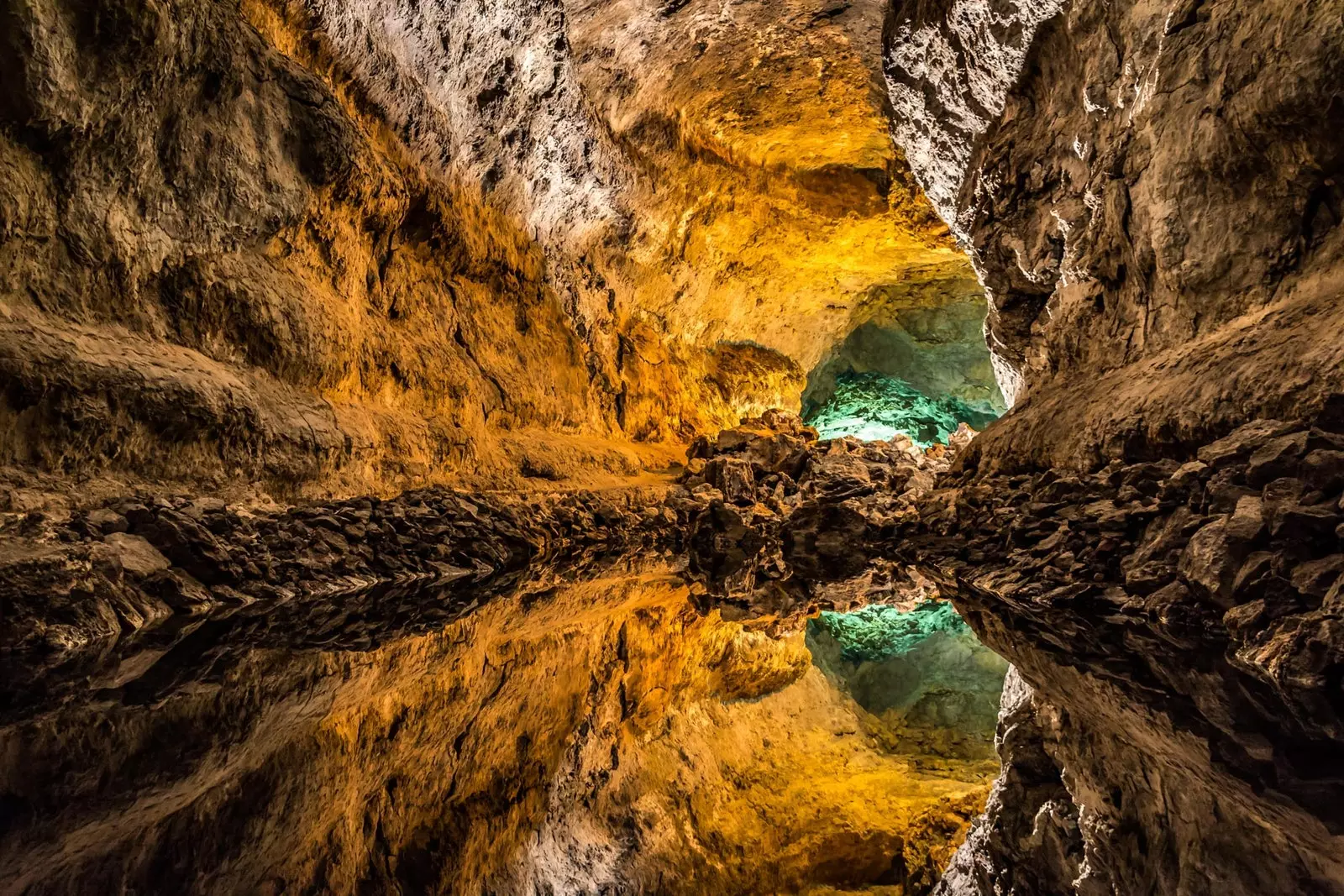
The Cueva de los Verdes, fruit of the fury of the volcano
Twenty thousand years ago (millennium above, millennium below), the Volcán de la Corona, in Lanzarote, erupted and its lava advanced incandescent creating one of the longest volcanic tubes in the world.
Along these underground tunnels, called jameos, we find multitude of geological formations, among which the Cueva de los Verdes stands out, in the municipality of Haría, in the north of the island.
As soon as you set foot inside, the temperature changes while your eyes get used to the play of light and shadow that unfolds around us.
Here, underground, our mind seems to forget for a moment the outside world, as if we had crossed a threshold and landed in a place where time and space do not exist, only nature flaunting her power as only she knows how to do: silent.
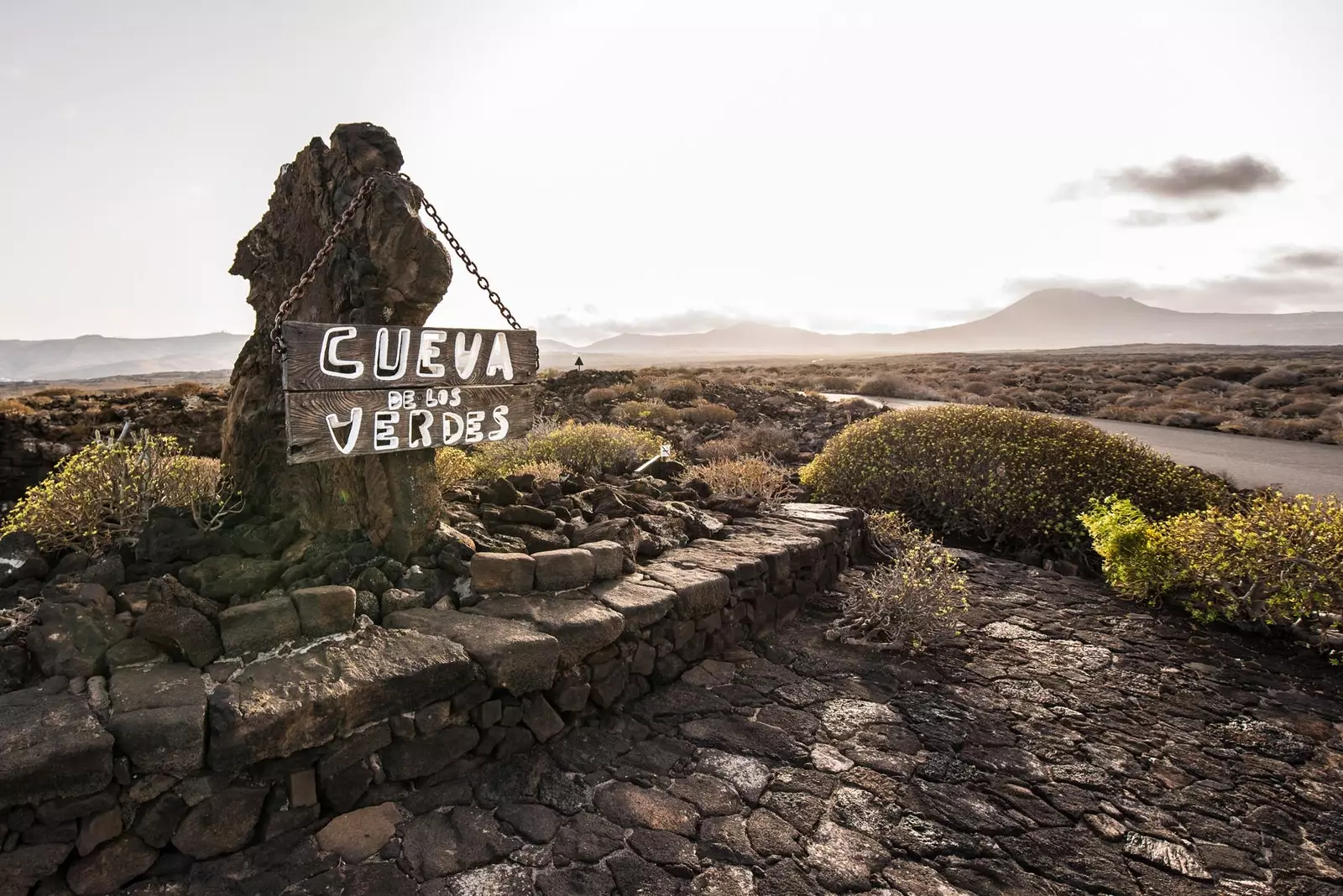
Lanzorte hides many secrets, do we discover them?
THE CAPRICHES OF LAVA
"It is not easy to imagine the prevailing atmosphere inside this grotto while ravines of shimmering lava slithered across its bottom amidst a dull roar and with a temperature of about a thousand degrees centigrade. Reading these words spoken by Telesforo Bravo in 1964 we can get an idea of what happened here
The formation of this type of underground tunnels is due to the cooling of the lava surface, which solidifies, while inside the lava river continues to flow on its way to the sea.
The roof remains in place without falling off and once the lava stops flowing the conduits form a network of galleries and caves such as the Cueva de los Verdes, whose height reaches in some points to 50 meters high and 15 wide.
Located in the natural space known as Natural Monument of the Crown , the Cueva de los Verdes forms part of the Corona volcanic tube, seven kilometers long, that joins the crater of the volcano with the sea.
The last section of the tube, one and a half kilometers long, is completely flooded and is called Atlantis tunnel.
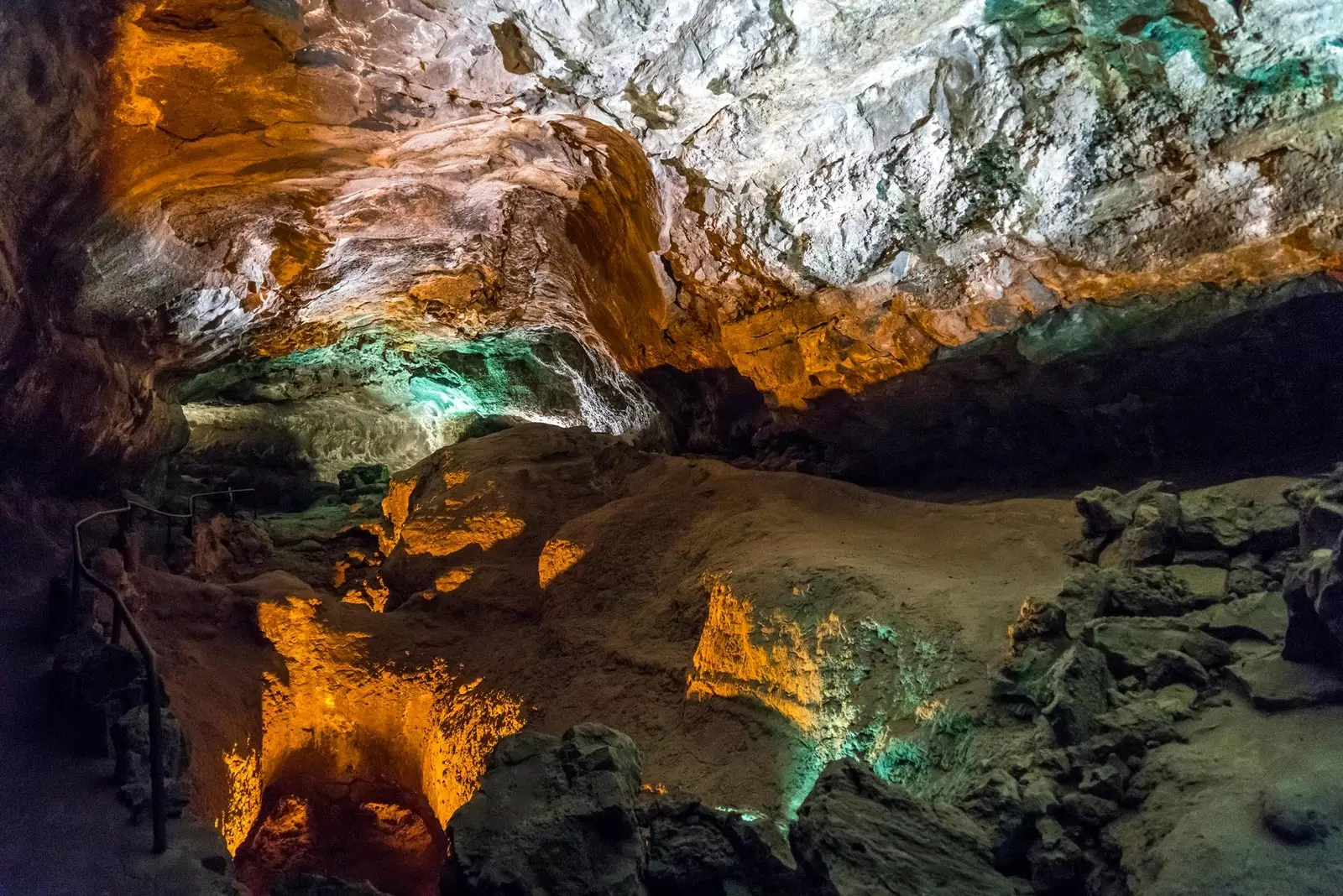
Lights and shadows play hide and seek in the Cueva de los Verdes
A HISTORY OF PIRATES
The first existing testimonies about the Cueva de los Verdes are found in the writings of the engineer Leonardo Torrani in 1590, in which he speaks of its defensive and protective importance for the population of the island.
The ancient aborigines of the island used the cave for shelter and later, during the 16th and 17th centuries, it was used as a hiding place against the attacks of the Barbary pirates and slave catchers from North Africa.
Already in the nineteenth century, scientists and researchers from all over the world –such as geologists Georg Hartung, Karl Von Fritsch and Eduardo Hernández-Pacheco– visited the cave to study its formation and analyze all its peculiarities.
As for its name, there are several theories. Many local historians say that the cave served as a hiding place for a family known as Los Verdes, owner of those lands, Although there is no documentation about it.
The other theory suggests that the cave owes its name to the range of colors found inside.
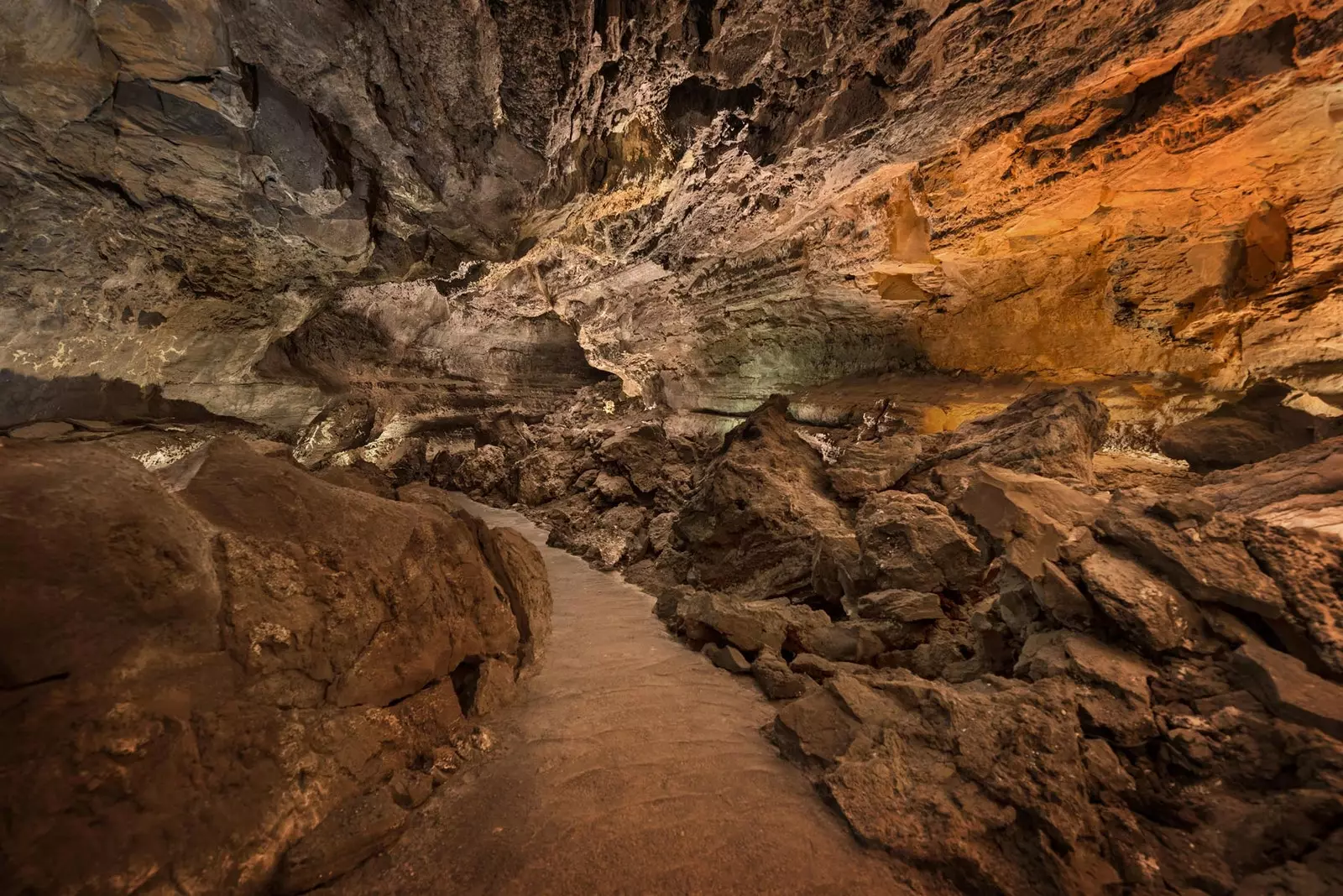
Thousands of years petrified in an instant
JOURNEY TO THE CENTER OF THE EARTH
The visitable section of the Cueva de los Verdes is made up of one kilometer of capricious superimposed galleries with vertical interconnections that a mysterious and amazing trip to the bowels of the Earth
The first image that the cave offers us as soon as we go down a few meters leaves us speechless for the rest of the tour.
A natural rock palette in which emerald green, gold and ocher are mixed and that for a moment makes us lose track of space: Is it right there or millions of light years away from us?
As we advance, we will find unique corners such as the Room of the Esthetes , the Hartung Louvre, the Devil's Furnace , the Crypt, the Auditorium, the Castles, the monster head , the Foot of the Guanche, the Chasms of Maidens and the Moorish Gate.
All these points make up a set of underground and mesmerizing postcards that you will not be able to stop contemplating.
Warning: you will have to go to the end to discover the secret.
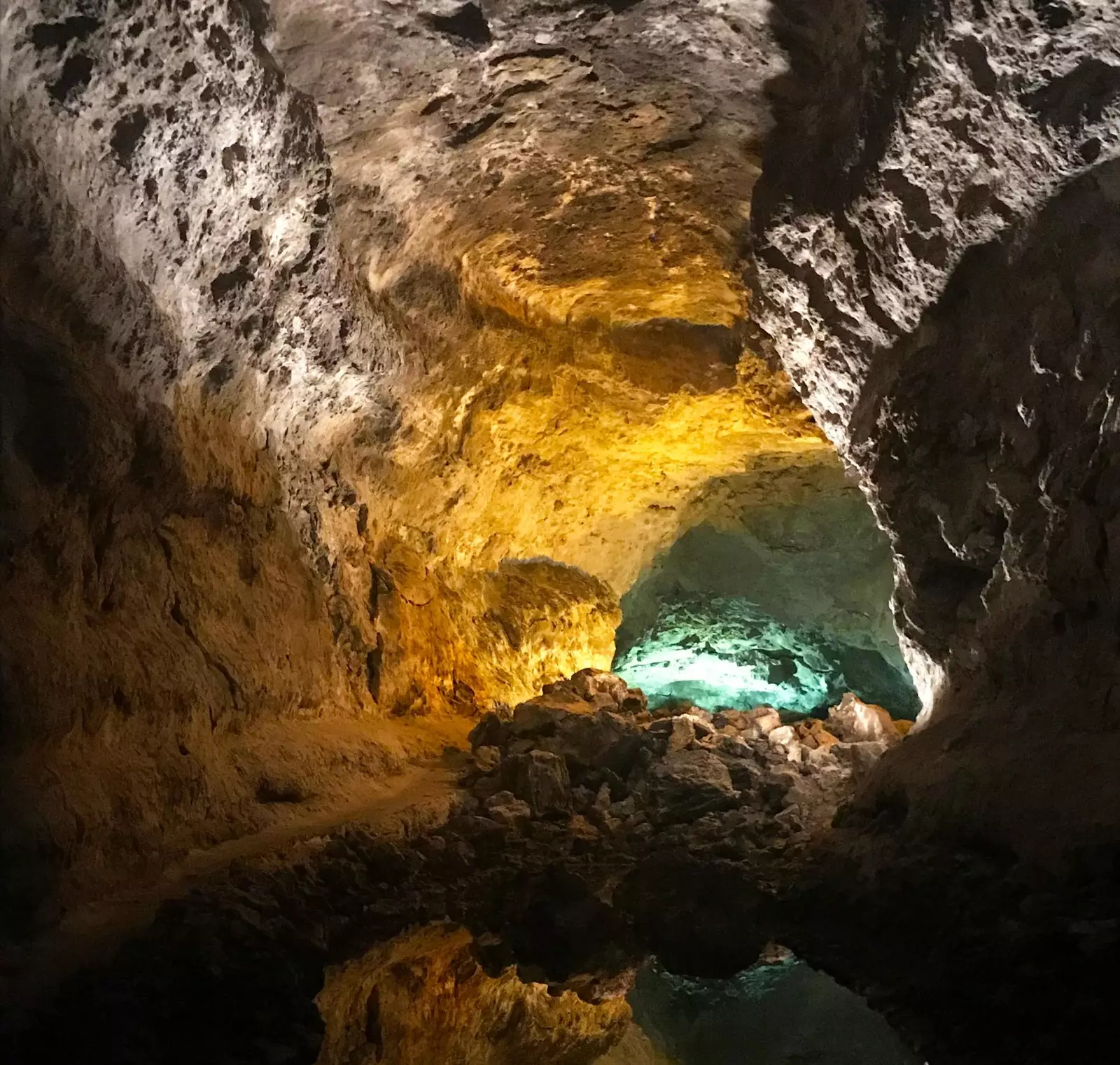
The cave is part of the longest volcanic tube in the world
MUCH MORE THAN GREEN
During our journey through the depths of the Earth, we will find multitude of colors and lighting effects that immediately will make us realize the singularities that this grotto presents.
To begin with, they attract attention the reddish colors of the vaulted ceilings and walls . His cause? The oxidation of iron in basalts, volcanic rocks of a dark color (greenish black).
The ocher tones that greeted us at the entrance and that are repeated throughout the entire underground cavity, have their origin in the reflections of light on saline efflorescence, whitish spots that appear due to the humidity produced by water seepage from the surface.
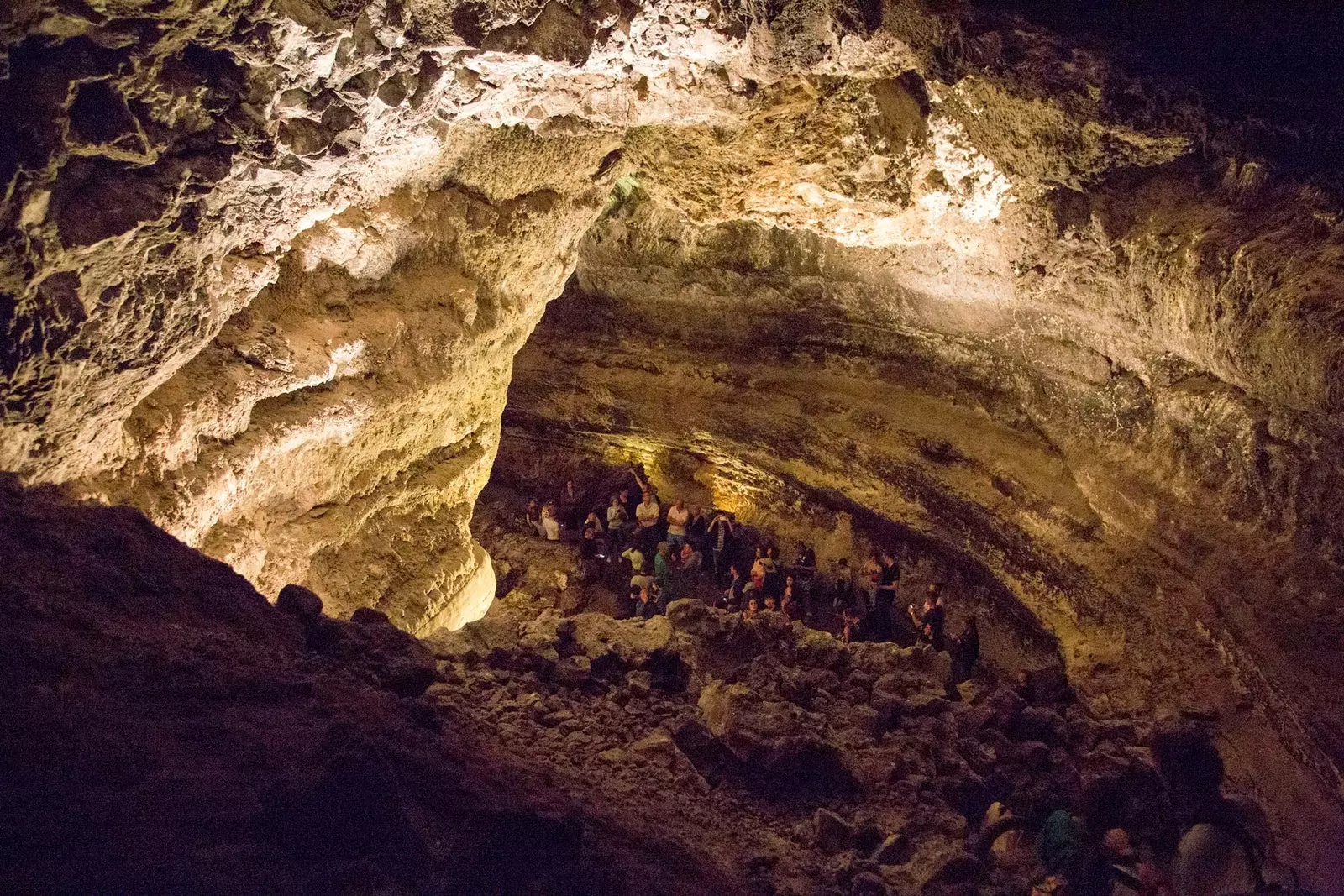
An experience not suitable for claustrophobics
THE INTERVENTION OF LIGHT
In 1964, the Cabildo de Lanzarote commissioned the conditioning of the Cueva de los Verdes to the artist from Lanzarote Jesús Soto, architect of the creation of the interior journey as well as its illumination.
Soto, close collaborator of César Manrique, was in charge of adapting this volcanic sanctuary, enhancing the splendid forms sculpted by the lava and experimenting with light and shadow on the walls.
The intervention was at all times very respectful with the environment, being the outer area and the inner path the points where human labor was most relevant.
Jesús Soto displayed all his talent in this project playing with light to highlight the relief of the grotto as well as the different textures and materials that we find here.
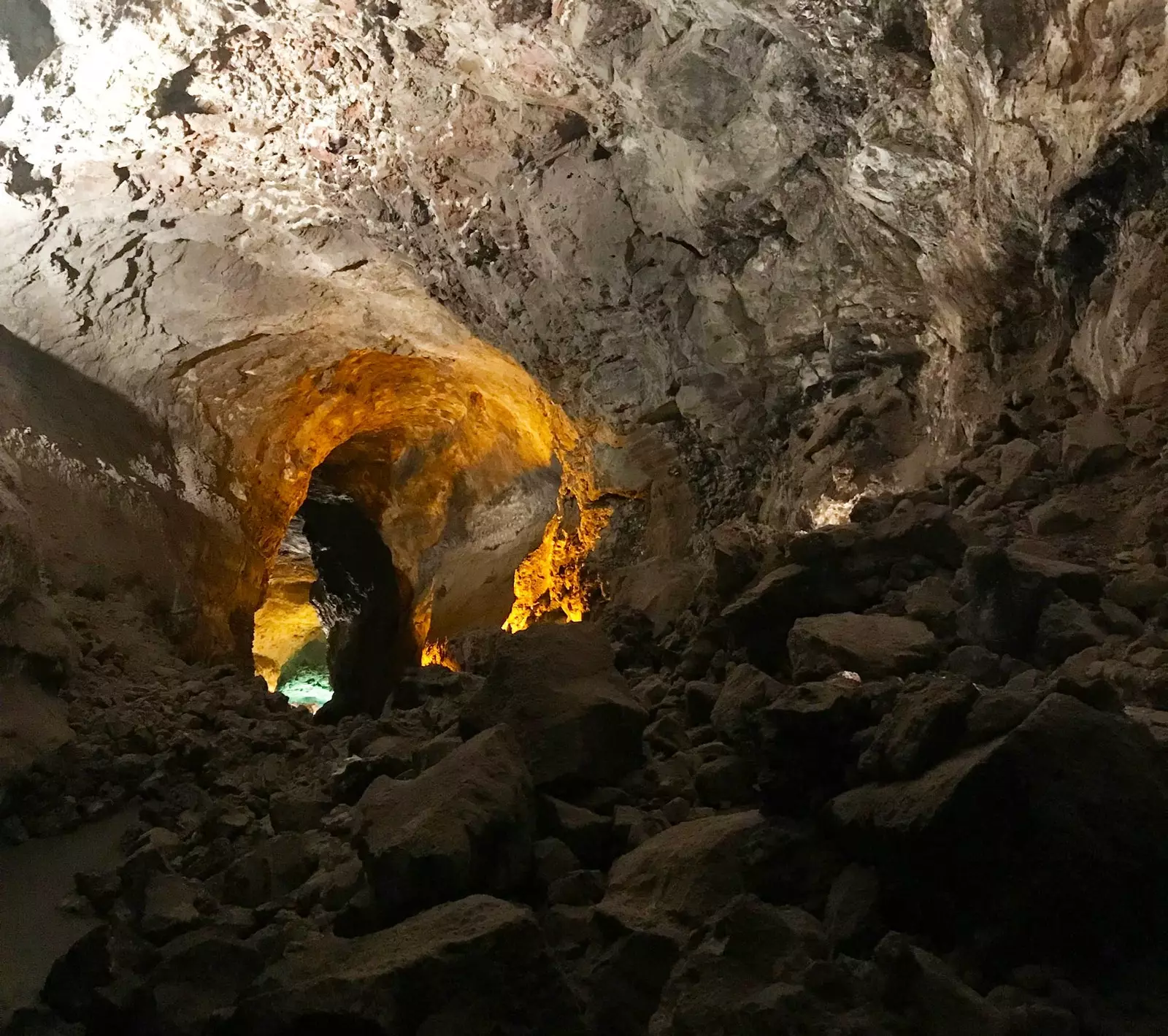
The sublime power of nature rests silently in the depths of the grotto
UNDERGROUND MUSIC
The natural acoustics provided by the Cueva de los Verdes have been used to dedicate a space to hold concerts and cultural events that become a unique experience.
In this inimitable setting, the Lanzarote Visual Music Festival and it was also the setting where the last edition of the Lanzarote Film Festival , with a very limited capacity where a few attendees were able to enjoy a movie session in a room that they will never forget.
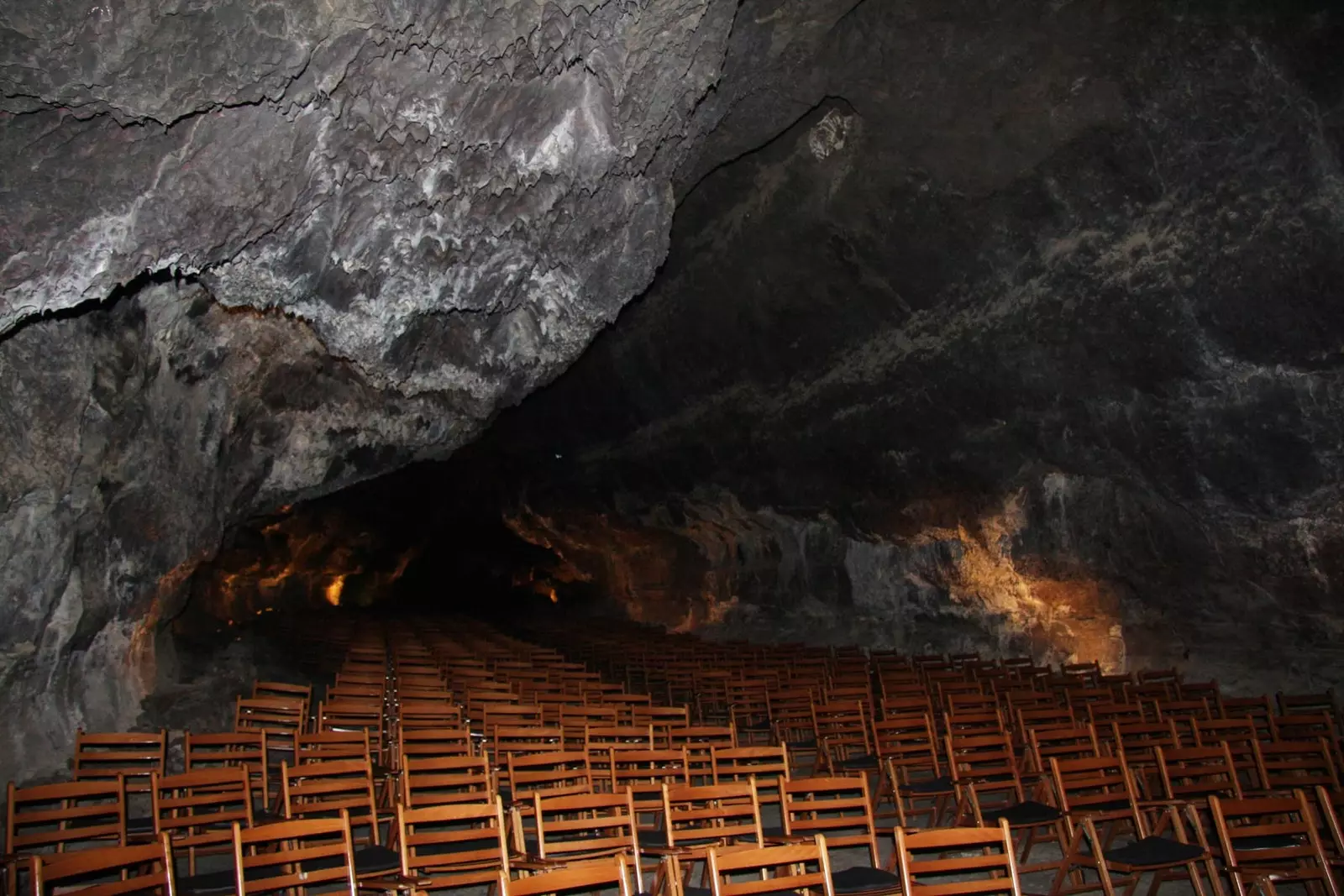
The unique auditorium of the Cueva de los Verdes
THE MAGIC OF LANZAROTE
In addition to the Cueva de los Verdes, there is a formation that also originated from the eruption of the Corona volcano and whose visit is another of the essential places on the Canary Island: Jameos del Agua.
situated inside the same volcanic tube but already in the part closest to the coast, the Jameos del Agua form part, together with the Cueva de los Verdes, of the network of Art, Culture and Tourism Centers of the Cabildo de Lanzarote, as well as the Timanfaya National Park, the Mirador del Río and the Cactus Garden.
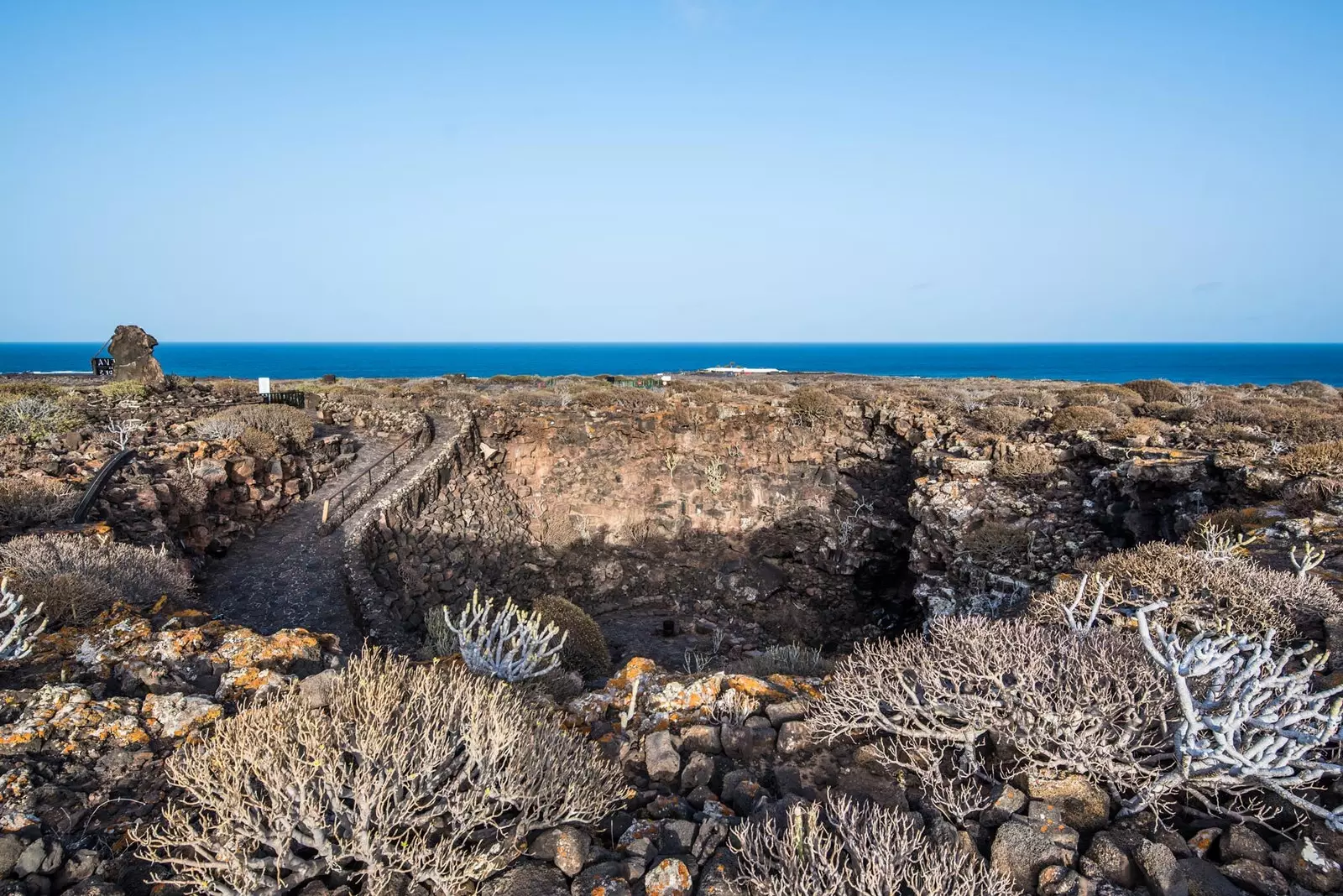
Lanzarote, an island from which you will not want to return
The Jameos del Agua are so called due to the interior lake that originated due to the seepage of sea water.
On this occasion the collapse of the volcanic tube did occur and it was César Manrique who achieved here a perfect harmony between art and nature displaying all his creativity.
In the municipality of Haría we can also visit the House-Museum of César Manrique, which he began to build in 1986 and where he lived until his death in 1992.
Here we can find, in addition to many works by the artist, surprising objects and craft pieces, his studio full of easels and tools, plants of all kinds and a unique pool, all this in a unique natural environment where volcanic colors reign in contrast to the purity of white.
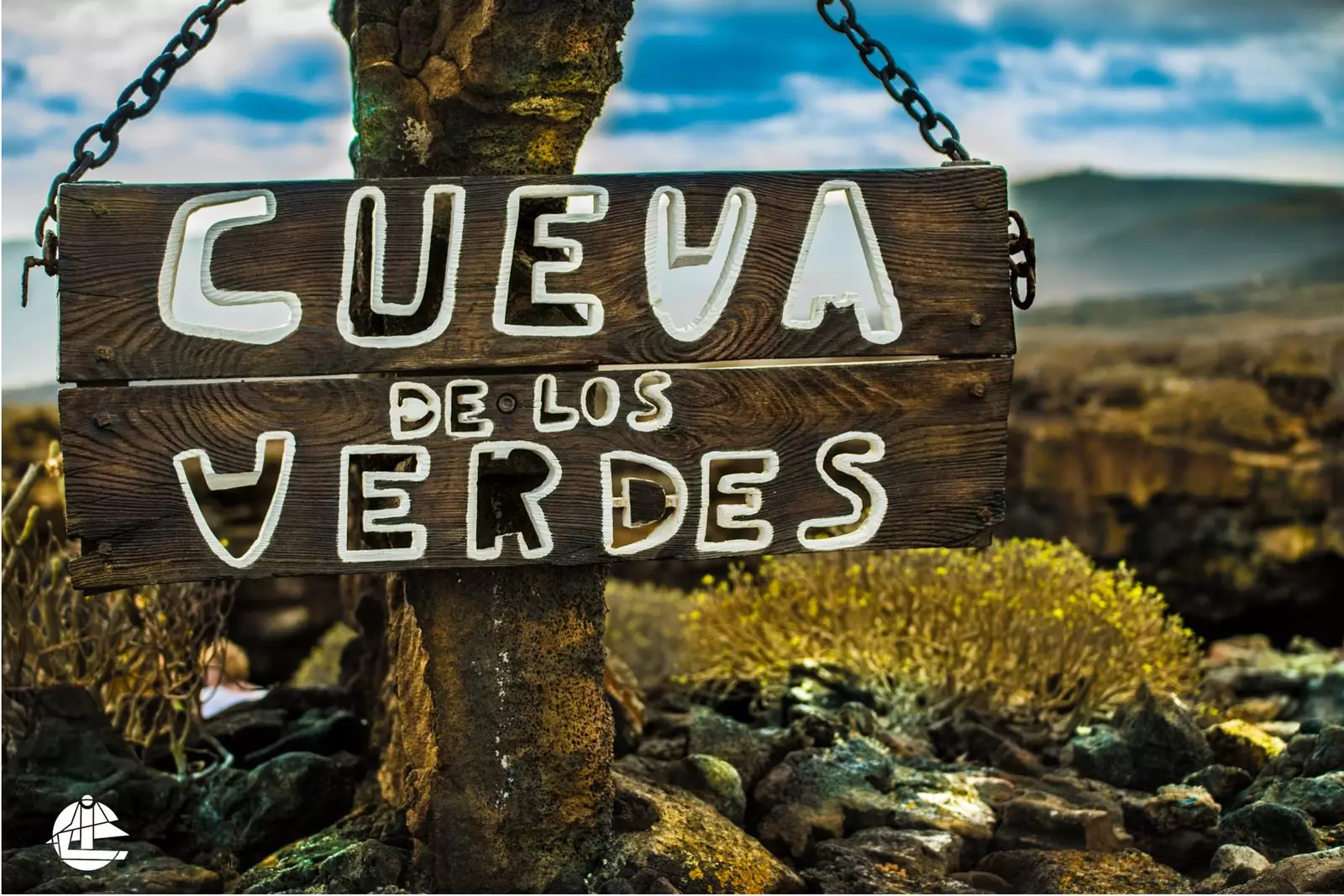
An essential visit on the Canary Island
PRACTICAL DATA
The guided visits to the Cueva de los Verdes have a duration of about 50 minutes and are performed every 20. The internal temperature does not exceed 20 degrees.
As for the schedule, you can visit every day from 10 a.m. to 6 p.m., with the last visit at 5 p.m. Summer hours (July to September) are from 10 a.m. to 7 p.m., with the last visit at 6 p.m.
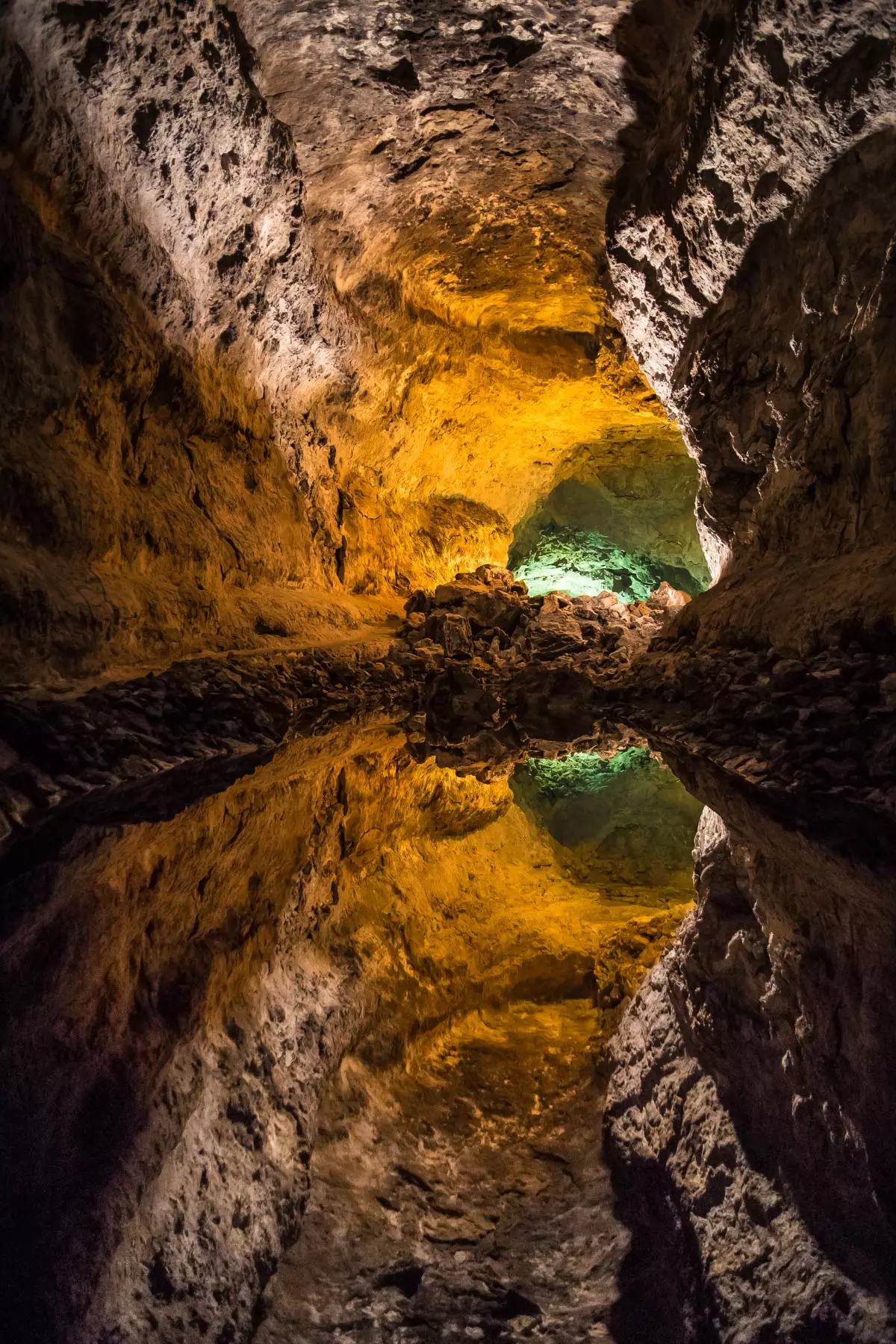
A puzzling and magnificent optical effect
